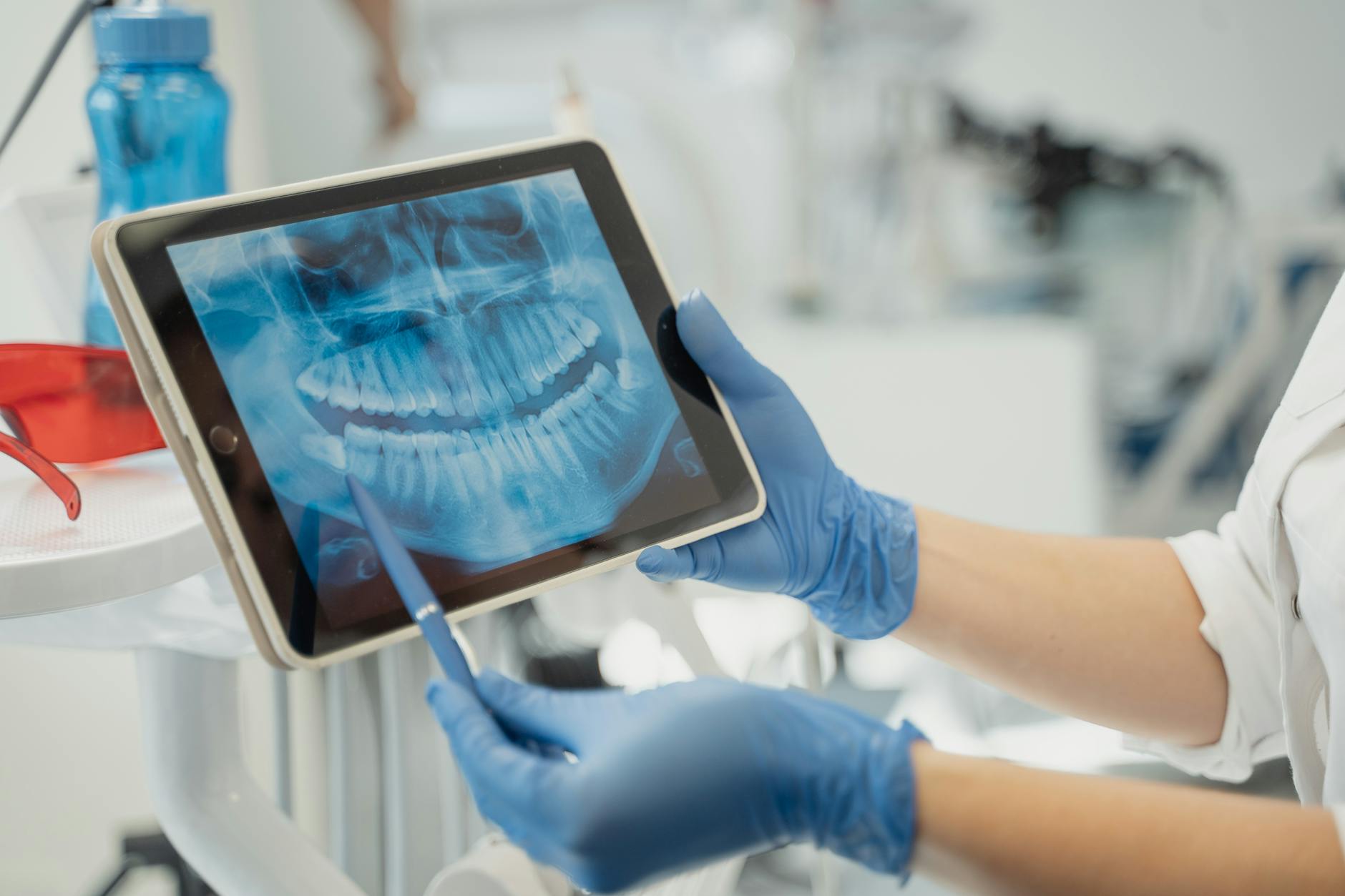Understanding Custom Mouthguards
Custom mouthguards are individually made appliances designed to fit the exact shape of your teeth and gums. Using an impression or digital scan, they’re crafted to cushion teeth and jaws, helping absorb impact during sports or reduce stress from nighttime clenching or grinding. Because they’re tailored to you, they tend to feel secure with less bulk, making it easier to breathe and speak while wearing them.
These guards are fabricated from durable materials and refined to your bite so the forces are distributed evenly, which can lower the risk of chipped teeth, lip and cheek injuries, and jaw strain. In the custom mouthguard vs boil and bite discussion, the custom option typically offers a closer fit, better stability, and longer-lasting performance because it isn’t reshaped at home. If you notice sore spots, looseness, cracks, or a change in your bite, stop using the guard and contact your dentist during business hours for an in-person assessment or adjustment.
- Rinse before and after use; clean with a soft brush and mild soap.
- Use cool or lukewarm water; avoid hot water that can warp the guard.
- Air-dry fully and store in a ventilated case away from heat and pets.
- Bring it to routine dental visits so it can be checked for wear and fit.
What is a Boil-and-Bite Mouthguard?
A boil-and-bite mouthguard is an over-the-counter thermoplastic tray that softens in hot water and is shaped by biting so it approximates your teeth. People use these for recreational sports or as a short-term guard when they need something quickly, but the fit is limited by the material and your molding technique. If you’re comparing a custom mouthguard vs boil and bite, know that boil-and-bite guards are adapted at home, while custom guards are made from precise dental impressions. When molded well, it should feel snug and protective, yet most users notice more bulk than with a dentist-made guard.
- Read the product instructions completely before starting.
- Heat clean water per the package directions; submerge the guard briefly until it becomes flexible (excessive boiling or stirring can warp it).
- Remove with tongs, let it cool until warm to the touch; center it on your upper teeth; bite gently and use tongue/cheeks and fingers to mold without biting through.
- Press the edges against the gums for a closer seal, then cool in cold water to help set the shape.
- If the guard feels bulky, loose, creates sore spots, or you find yourself clenching harder, it’s best to discontinue use and arrange an in-person evaluation with a dentist during business hours.
Fit and Comfort: A Comparison
Fit and comfort are what determine whether a mouthguard feels natural or becomes a distraction. In the custom mouthguard vs boil and bite comparison, a dentist-made guard is shaped from a precise model of your teeth, so it hugs the enamel evenly, stays put when you talk, and achieves protection with less bulk. That usually means easier breathing and speaking, fewer sore spots, and less jaw or gum pinch. By contrast, boil‑and‑bite guards depend on at-home molding; they can clamp a few teeth tightly while floating elsewhere, feel thicker, and sometimes shift during play or sleep.
Even pressure and a stable fit also help distribute forces more comfortably, which is why many people adapt to custom guards quickly. While boil‑and‑bite trays can be remolded, repeated heating can thin the material and won’t correct an uneven bite; if you notice rubbing, gagging, or looseness, pause use and contact a dentist during business hours.
- Rinse your mouth with cool water; a mild warm saltwater rinse can soothe minor irritation.
- Clean the guard daily with mild soap and a soft brush; let it dry fully before storing.
- Avoid very hot water, dishwashers, or microwaves that can warp the guard.
- For a small rough spot, a dab of orthodontic wax can help briefly—do not cut or grind the guard yourself.
Protection Levels: Which is Better?
In the custom mouthguard vs boil and bite debate, a custom-fitted guard generally provides stronger protection in contact and court sports because it seals to your teeth and gums, covers the right areas, and maintains even thickness where impacts happen. Boil-and-bite guards can help in a pinch, but home molding often thins the biting surfaces and creates an uneven fit, which reduces shock absorption and may dislodge on impact. Custom guards can be designed for your sport, teeth alignment, and braces, improving retention, breathing, and speech while lowering the risk of chipped or loosened teeth. For pure protection, a well-made custom guard usually outperforms over-the-counter options.
- After any hit to the mouth, stop play and check for cuts, chips, or a loose tooth.
- Rinse gently with water; apply a cool compress to lips or cheeks to limit swelling.
- If you find a tooth fragment, keep it moist in milk or saliva; do not scrub it.
- Avoid chewing hard foods and wear your guard until you can be seen.
- Call your dentist during business hours as soon as possible for an evaluation, especially if you have pain, sensitivity, or a tooth feels different.
- Replace any guard that is torn, misshapen, or no longer stays in place; remold a boil-and-bite only as instructions allow.
Cost Analysis: Custom vs Boil-and-Bite
Cost isn’t just the sticker price—it’s how long a guard lasts, how well it protects, and how often it needs replacement. In a cost analysis of a custom mouthguard vs boil and bite, custom guards usually involve a higher initial investment but can deliver durable fit and fewer replacements, while boil-and-bite options are cheaper up front yet may wear faster or fit less securely. Poor fit can also increase the chance of dental or soft-tissue injury, which is far more costly than the guard itself.
Key drivers of lifetime cost include material thickness, how hard you clench or grind, sport type, and whether adjustments are available. Dentist-made guards can be relined or adjusted as your bite changes; over-the-counter trays are often replaced when they loosen, flatten, or crack. Teens in growth spurts and athletes in high-contact sports may cycle through guards more often regardless of type. Insurance or flexible spending benefits may offset some costs, but coverage varies.
- Rinse after use; clean with a soft brush and mild soap—avoid hot water.
- Air-dry fully; store in a ventilated case away from heat and pets.
- Inspect weekly for cracks or looseness; if found, stop wearing and call during business hours.
- For sore spots, discontinue use and try a gentle warm saltwater rinse; seek in-person care promptly.
- Bring your guard to routine dental visits for evaluation and adjustments.
When to Choose a Custom Mouthguard
Choose a custom mouthguard when fit, comfort, and protection need to be predictable. If you’re weighing a custom mouthguard vs boil and bite, opt for a dentist-made guard when over-the-counter versions feel bulky, won’t stay put, or rub your gums. Custom impressions allow the material to sit exactly where it should, so you can breathe, speak, and hydrate more easily while protecting teeth, existing dental work, and jaw joints.
- You play collision or contact sports, or have a history of dental injury.
- You clench or grind at night, or wake with jaw soreness or headaches.
- You wear braces or have implants, veneers, crowns, or bridges that need precise coverage.
- Stock or boil-and-bite guards feel loose, bulky, or trigger a gag reflex.
- You need clearer speech and easier breathing during intense training or long practices.
- You’ve had sore spots, irritation, or difficulty keeping an over-the-counter guard in place.
- Until you’re seen, use the best-fitting over-the-counter guard only as a short-term stand-in; rinse after use, let it air-dry, avoid heat, and arrange an in-person evaluation during business hours.
Benefits for Kids in Sports
For children who play contact or ball sports, a well-fitted mouthguard helps cushion blows, lowering the chance of chipped or broken teeth and soft‑tissue cuts. A custom guard tends to stay put when kids run, breathe hard, and communicate, which can make it more comfortable and more likely to be worn consistently. When comparing a custom mouthguard vs boil and bite, families often notice differences in fit, durability, and how easily a child can speak and breathe during play.
Custom guards are made to a child’s unique bite (including braces), so they distribute force more evenly and are less likely to be chewed out of shape. That secure fit can reduce lip and cheek injuries and minimize distractions on the field. Boil‑and‑bite options can offer basic protection, but if they’re too bulky or distorted, kids may remove them or clench more, which reduces effectiveness. Whatever you choose, rinse the guard after each use, let it air dry in a ventilated case, and replace it if it tears, thins, or no longer fits as your child grows.
- If your child takes a hit to the mouth, have them gently rinse with cool water and apply a cold compress to reduce swelling.
- Use clean gauze to hold pressure on any minor bleeding, and avoid hard or sticky foods until checked.
- Call your dentist as soon as possible during business hours for an exam, even if the injury looks small.
- Seek urgent care right away for heavy bleeding, a suspected broken jaw, or a knocked‑out permanent tooth.
Care and Maintenance Tips
Consistent care keeps your mouthguard clean, comfortable, and effective. Whether you wear it for sports or to protect teeth from nighttime clenching, a few simple steps make the biggest difference. No matter if you use a custom mouthguard vs boil and bite, day‑to‑day maintenance is largely the same. Follow these basics at home, and seek in‑person help promptly if something looks or feels off.




